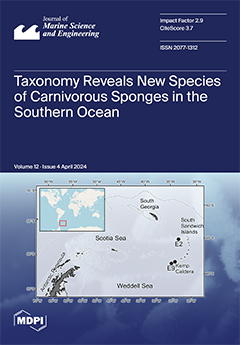Annual outbreaks of floating
Ulva prolifera blooms in the Yellow Sea have caused serious local environmental and economic problems. Rapid and effective monitoring of
Ulva blooms from satellite observations with wide spatial-temporal coverage can greatly enhance disaster response efforts. Various satellite sensors and
[...] Read more.
Annual outbreaks of floating
Ulva prolifera blooms in the Yellow Sea have caused serious local environmental and economic problems. Rapid and effective monitoring of
Ulva blooms from satellite observations with wide spatial-temporal coverage can greatly enhance disaster response efforts. Various satellite sensors and remote sensing methods have been employed for
Ulva detection, yet automatic and rapid
Ulva detection remains challenging mainly due to complex observation scenarios present in different satellite images, and even within a single satellite image. Here, a reliable and fully automatic method was proposed for the rapid extraction of
Ulva features using the Tasseled-Cap Greenness (TCG) index from satellite top-of-atmosphere reflectance (
RTOA) data. Based on the TCG characteristics of
Ulva and
Ulva-free targets, a local adaptive threshold (LAT) approach was utilized to automatically select a TCG threshold for moving pixel windows. When tested on HY1C/D-Coastal Zone Imager (CZI) images, the proposed method, termed the TCG-LAT method, achieved over 95%
Ulva detection accuracy though cross-comparison with the TCG and VBFAH indexes with a visually determined threshold. It exhibited robust performance even against complex water backgrounds and under non-optimal observing conditions with sun glint and cloud cover. The TCG-LAT method was further applied to multiple HY1C/D-CZI images for automatic
Ulva bloom monitoring in the Yellow Sea in 2023. Moreover, promising results were obtained by applying the TCG-LAT method to multiple optical satellite sensors, including GF-Wide Field View Camera (GF-WFV), HJ-Charge Coupled Device (HJ-CCD), Sentinel2B-Multispectral Imager (S2B-MSI), and the Geostationary Ocean Color Imager (GOCI-II). The TCG-LAT method is poised for integration into operational systems for disaster monitoring to enable the rapid monitoring of
Ulva blooms in nearshore waters, facilitated by the availability of near-real-time satellite images.
Full article





